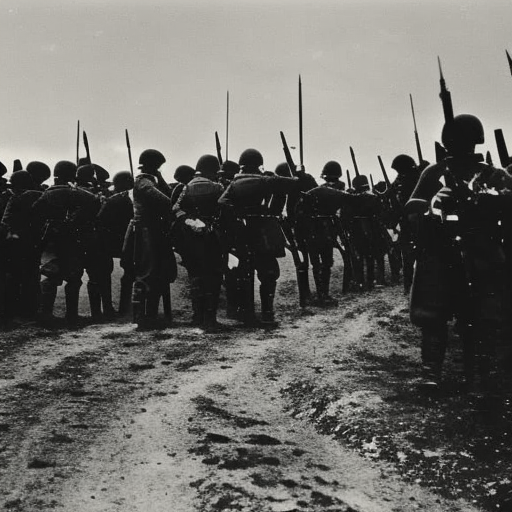Battle of Verdun: A Pivotal Moment in World War I
The Battle of Verdun, fought between the German and French armies from February to December 1916, was one of the longest and bloodiest battles of World War I. It took place near the town of Verdun-sur-Meuse in northeastern France and had a profound impact on the course of the war. The battle was characterized by its immense scale, high casualties, and the strategic significance attached to the defense of the French fortress city of Verdun.
The German Offensive
The battle began on February 21, 1916, when the German army launched a massive offensive against the French lines. The German objective was to bleed the French army dry by forcing them to defend Verdun at all costs. The initial German assault was swift and overwhelming, catching the French by surprise. German artillery bombardment preceded the attack, destroying French defenses and causing chaos among the troops.
The French Defense
Despite the initial success of the German offensive, the French were determined to hold Verdun. Under the leadership of General Philippe Pétain, the French army organized a tenacious defense, relying on a network of trenches and fortifications. Pétain implemented a strategy of rotating troops regularly to maintain their morale and combat effectiveness. The French soldiers endured unimaginable hardships, including constant artillery bombardment, trench warfare, and the threat of poison gas attacks.
The Battle of Attrition
The Battle of Verdun soon turned into a grueling war of attrition, with both sides suffering heavy casualties. The Germans hoped to break the French spirit by inflicting massive losses, while the French aimed to hold on and wear down the German forces. The battle became a symbol of national pride for both sides, with the French rallying around the slogan “Ils ne passeront pas” (They shall not pass) and the Germans determined to capture Verdun.
Key Events and Turning Points
Several key events and turning points marked the Battle of Verdun. In March 1916, the Germans launched a major assault on the French positions at Mort-Homme and Hill 304. The French, however, managed to hold their ground despite heavy losses. In April, the Germans introduced a new weapon, the flamethrower, which caused havoc among the French defenders. Despite these setbacks, the French managed to maintain their defensive lines.
In June, the German offensive shifted to the east bank of the Meuse River, targeting the strategic fortress of Douaumont. The Germans successfully captured the fort, but the French counterattacked and recaptured it in October. The battle continued throughout the year, with neither side gaining a decisive advantage.
Aftermath and Legacy
By the end of the Battle of Verdun in December 1916, both sides had suffered heavy losses. The French had approximately 550,000 casualties, while the Germans had around 430,000. The battle had a profound impact on the psyche of both nations, with the French viewing it as a heroic defense and the Germans as a symbol of their military prowess.
The Battle of Verdun also had strategic implications. The German failure to capture Verdun diverted resources and attention from other fronts, weakening their overall war effort. It also highlighted the importance of defensive fortifications and the resilience of soldiers in trench warfare.
In conclusion, the Battle of Verdun was a pivotal moment in World War I. It was a battle of attrition that tested the endurance and determination of both the German and French armies. Despite heavy losses, the French successfully defended Verdun, halting the German advance and inflicting significant casualties. The battle’s legacy lies in its strategic impact, the sacrifices made by soldiers on both sides, and its enduring symbolism as a testament to the horrors of war.












